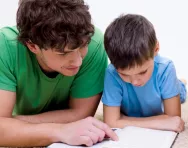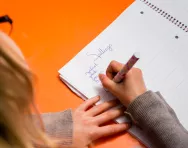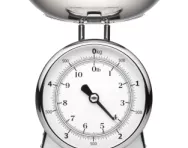Important update from TheSchoolRun
For the past 13 years, TheSchoolRun has been run by a small team of mums working from home, dedicated to providing quality educational resources to primary school parents. Unfortunately, rising supplier costs and falling revenue have made it impossible for us to continue operating, and we’ve had to make the difficult decision to close. The good news: We’ve arranged for another educational provider to take over many of our resources. These will be hosted on a new portal, where the content will be updated and expanded to support your child’s learning.
What this means for subscribers:
- Your subscription is still active, and for now, you can keep using the website as normal — just log in with your usual details to access all our articles and resources*.
- In a few months, all resources will move to the new portal. You’ll continue to have access there until your subscription ends. We’ll send you full details nearer the time.
- As a thank you for your support, we’ll also be sending you 16 primary school eBooks (worth £108.84) to download and keep.
A few changes to be aware of:
- The Learning Journey weekly email has ended, but your child’s plan will still be updated on your dashboard each Monday. Just log in to see the recommended worksheets.
- The 11+ weekly emails have now ended. We sent you all the remaining emails in the series at the end of March — please check your inbox (and spam folder) if you haven’t seen them. You can also follow the full programme here: 11+ Learning Journey.
If you have any questions, please contact us at [email protected]. Thank you for being part of our journey it’s been a privilege to support your family’s learning.
*If you need to reset your password, it will still work as usual. Please check your spam folder if the reset email doesn’t appear in your inbox.
Year 5 maths and English: how to support your child at home
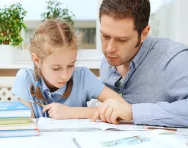
Year 5 may not seem a particulary significant year for your child - there are no SATs or other tests - but supporting their learning at home will give them a solid foundation for the year ahead, and the eventual move to Year 6.
No one wants to pile extra pressure on their child, but these simple but effective home learning ideas will consolidate what they're doing at school.
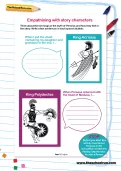
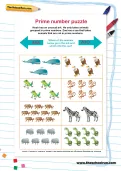
Start the Year 5 Learning Programme!
- Weekly maths, science & English worksheets direct to your inbox
- Follows the National Curriculum
- Keeps your child's learning on track
Year 5 English key area: myths and legends
Myths and legends are revisited throughout Key Stage 2 and are a fantastic resource to work on with your child, partly because there’s so much overlap into other subjects like history and religious studies. We reckon you’ll find them pretty engaging too.
A myth is a fictional traditional story. They were written to explain natural phenomena and quite often featured gods and / or fantasy creatures (ancient Greek mythology is a wonderful area to explore).
Legends are widely believed to be rooted in the truth, and are set in history. Because these traditional stories have been around for so long, over time they’ve taken on fictional elements. The legend of Robin Hood is a good example.
Read a selection of different myths and legends together and discuss the difference between the two genres. We love the content-packed Myths and Legends website (watch animations of myths from all around the UK and create your own) and the selection of myths and legends, free to listen to, on the Storynory website.
You could also ask your child to write their own myth or legend. Encourage them to plan out what they wish to include in their writing carefully, asking them to think about:
- Who the main characters will be
- What they will do
- When their myth / legend is set
- Where their myth / legend is set
- How it will start / end
Year 5 English key area: consider and evaluate different viewpoints
In Year 5, this is one of the spoken language objectives, and a really good one to do at home.
Start by explaining what a debate is, then form your own family debating society. This can be done with just two people for starters, but you might like to invite extended family members to join in too.
Together, pick some subjects you’d like to debate. They can be topical, or about a subject they’re interested in (for example, is VAR in football a good thing?), or about something you sometimes (or always!) disagree on at home (like the right amount of screen time for children) – whatever really, so long as it’s a topic they’ll be engaged in. We have 12 kids' debate topic ideas to start you off.
Make sure your child can’t always represent the side that they agree with in the debate. So, for instance, if you know they don’t like VAR, they have to argue for it instead of against it. This helps them to appreciate other viewpoints. Plus it's hard work to argue the opposite position to your natural inclination (as you might discover yourself!).
Year 5 English key area: making comparisons across books
By the time your child is in Year 5, you might have got out of the habit of reading with them regularly, but sharing books together is a good bonding exercise and will help them explore books in different ways. Take in turns to read a page each as you go.
As your child reads more and more, they’ll notice the difference between authors' styles (e.g. comical, serious, atmospheric, fast-paced) and also some similarities too – for instance they might be able to predict happy endings or infer characters' feelings.
To help them think more deeply about what they're reading, every now and then ask your child to write a book review about books you’ve shared together. Remind them to think of the reader and what they’ll want to know about the book, for example:
- Who is the author? What do we know about him/her?
- Where is the story set?
- How might the story make you feel?
Year 5 maths key area: Solve addition and subtraction multi-step problems in contexts
In Year 5, children should be able to read a maths word problem, and decide which of the four operations (addition, subtraction, multiplication, division) they'll need to use to solve it.
TheSchoolRun has a large selection of word / story problems to download, but you could also write out ‘real-life’ personal problems for them to solve, too (starring your own friends and family, perhaps). In Year 5, you can use larger numbers and include several solution steps. For example:
Asif had 400 football cards; Ellie had 180 football cards. They decided to give Tom half of their total cards haul. How many cards did Tom get?
For some ideas on the kind of ‘real-life’ maths problems your child will come across in Year 6, take a look at some past KS2 SATs papers. These will give you a really clear idea of what pupils in Year 5 work towards in terms of the complexity of the problems.
Year 5 maths key area: measuring the perimeter and area of shapes
By the end of Year 5, your child should be able to measure accurately. Ask them to define perimeter (the distance around the edge of a 2D shape) and area (the amount of space taken up by a 2D shape or surface, measured in square units like cm² or m²).
Encourage them to draw some 2D shapes – they can be as strange as they like. Have them use a ruler to measure the perimeter accurately. Ask them how they might calculate the area. Will this be more challenging with irregular shapes (compound shapes)?
As with all tasks that involve measurement, make it as real and relevant as possible. Measure objects in your home and talk about real-life situations when we might want to calculate the perimeter and area (when decorating, for example).
Year 5 maths key area: times tables
By Year 5, your child should be confident in their knowledge of all their multiplication tables up to 12x12. As dull as it sounds, going over times tables again and again is key, as knowing them without having to calculate each answer is vital for your child's future maths work. Try to do regular quick-fire times tables tests at least once a week.
There are lots of fun ways to revise times tables: look through TheSchoolRun's times tables resources and try our pick of the best times tables tools and best times tables apps.
Try some at-home multiplication tables games, too: for example, asking them to throw two dice and shout out the calculation (6 x 6; 10 x 7) or pick up two playing cards and do the same. They might find it fun to test family members over video call, too.
Year 5 maths key area: complete, read and interpret information in tables
Throughout primary school, children learn to manage data, drawing and reading charts and graphs. There’s plenty of opportunity to practise this skill at home, and they can use chatting to loved ones as a data-gathering research opportunity too!
Help them think of a topic of interest that they can survey others on. It might be favourite chocolate bars, flavours of crisps, football teams… Encourage them to survey as many people as possible, record their results in a table and then convert this into different types of charts (pictograms, tally charts, block diagrams, bar charts, line graphs and pie charts).
By Year 5 children should be able to analyse their data and make comparisons, too. For instance, if asked how many people prefer Ready Salted crips to Cheese and Onion crisps, they should be able to work out the calculation needed in order to tell you.




